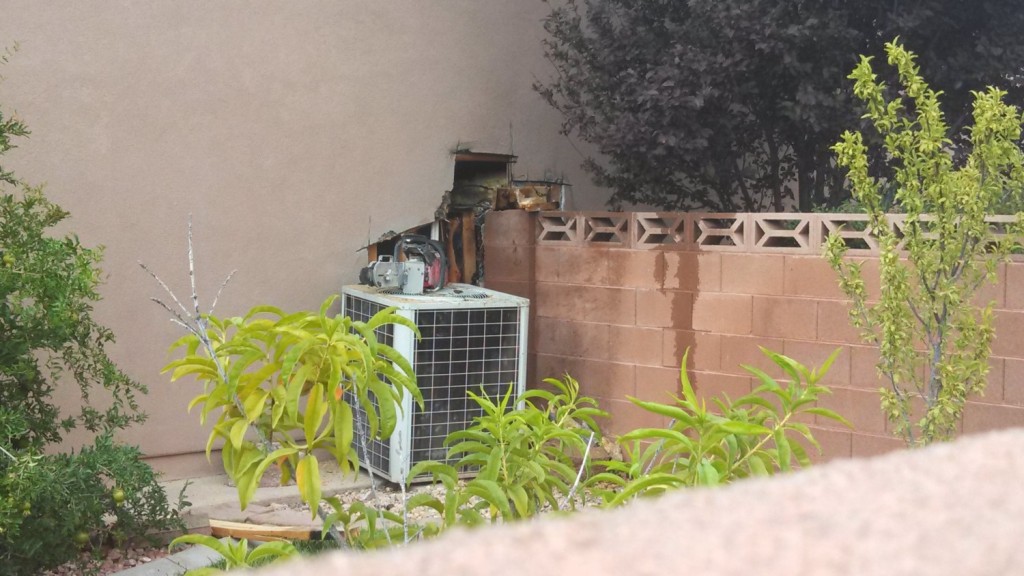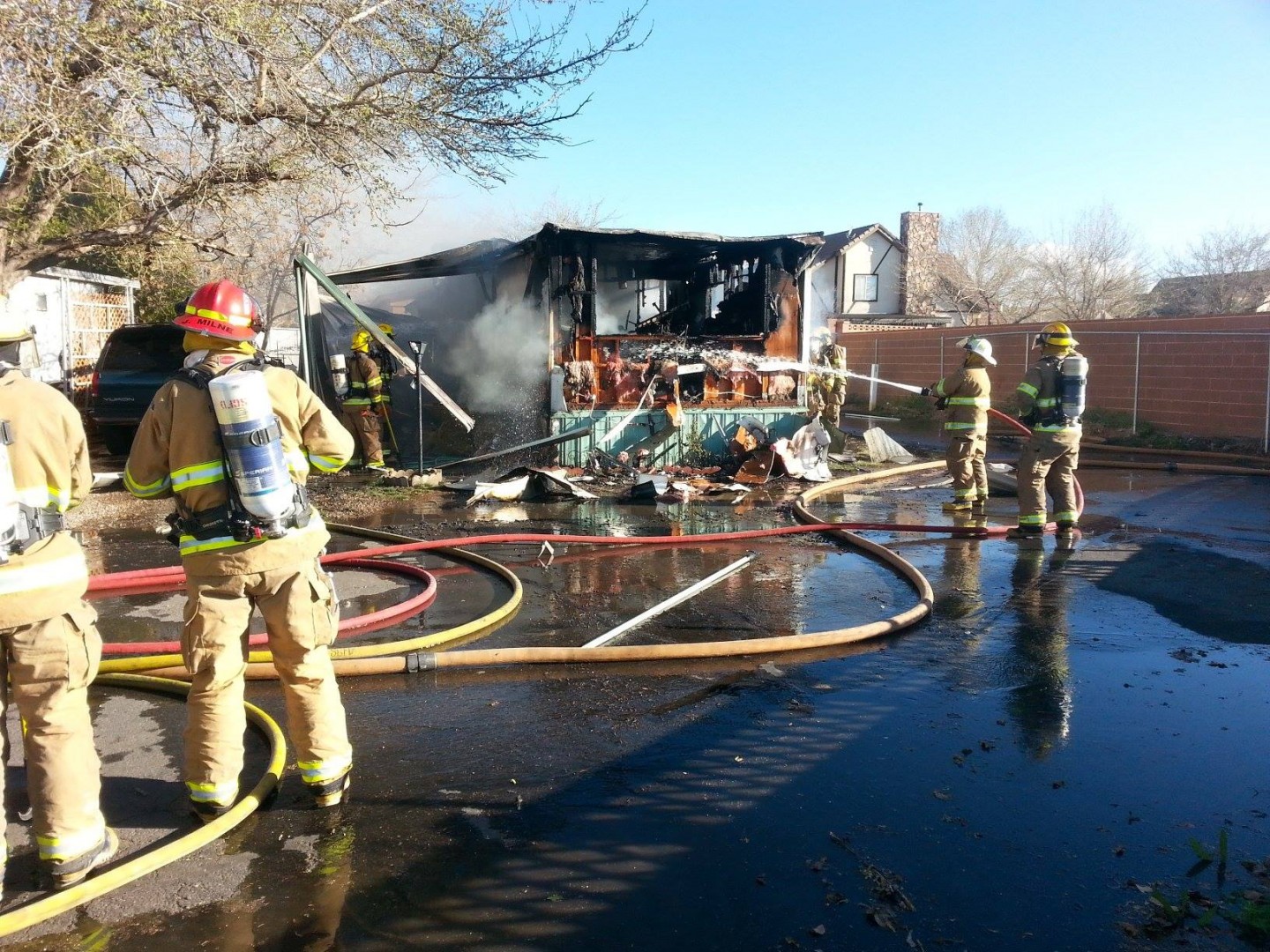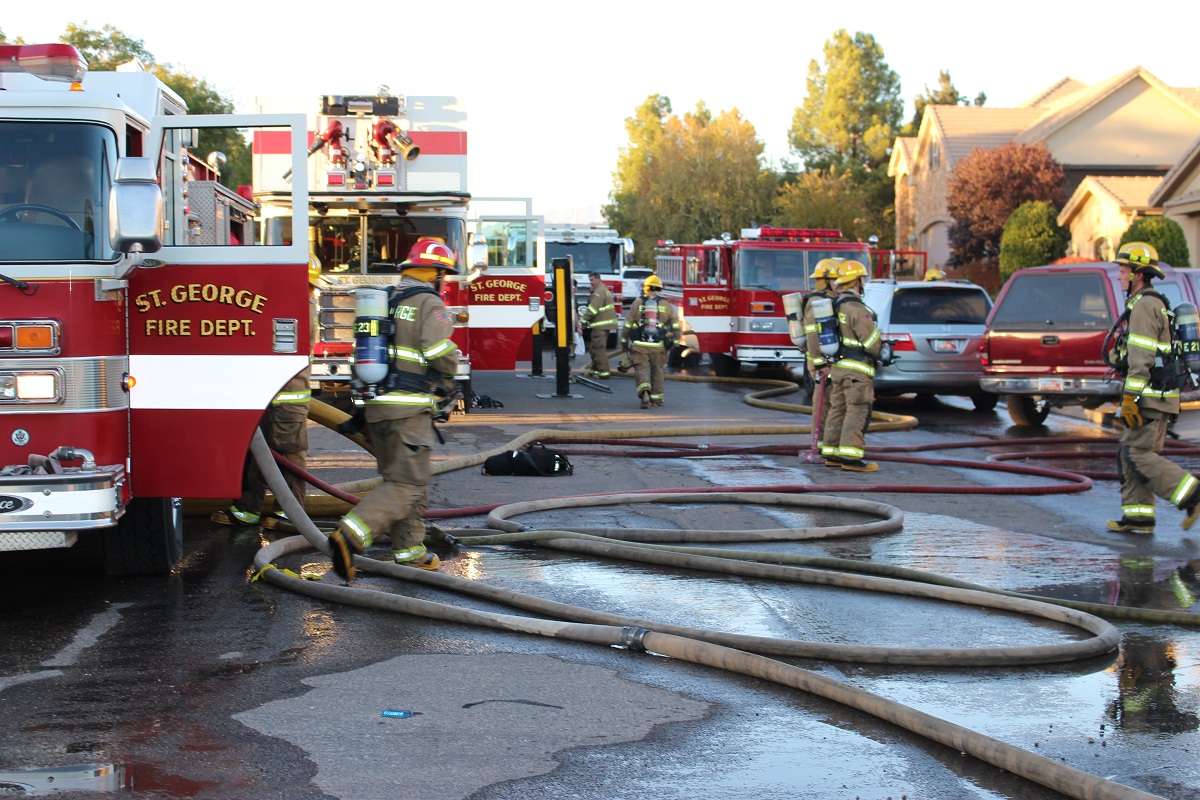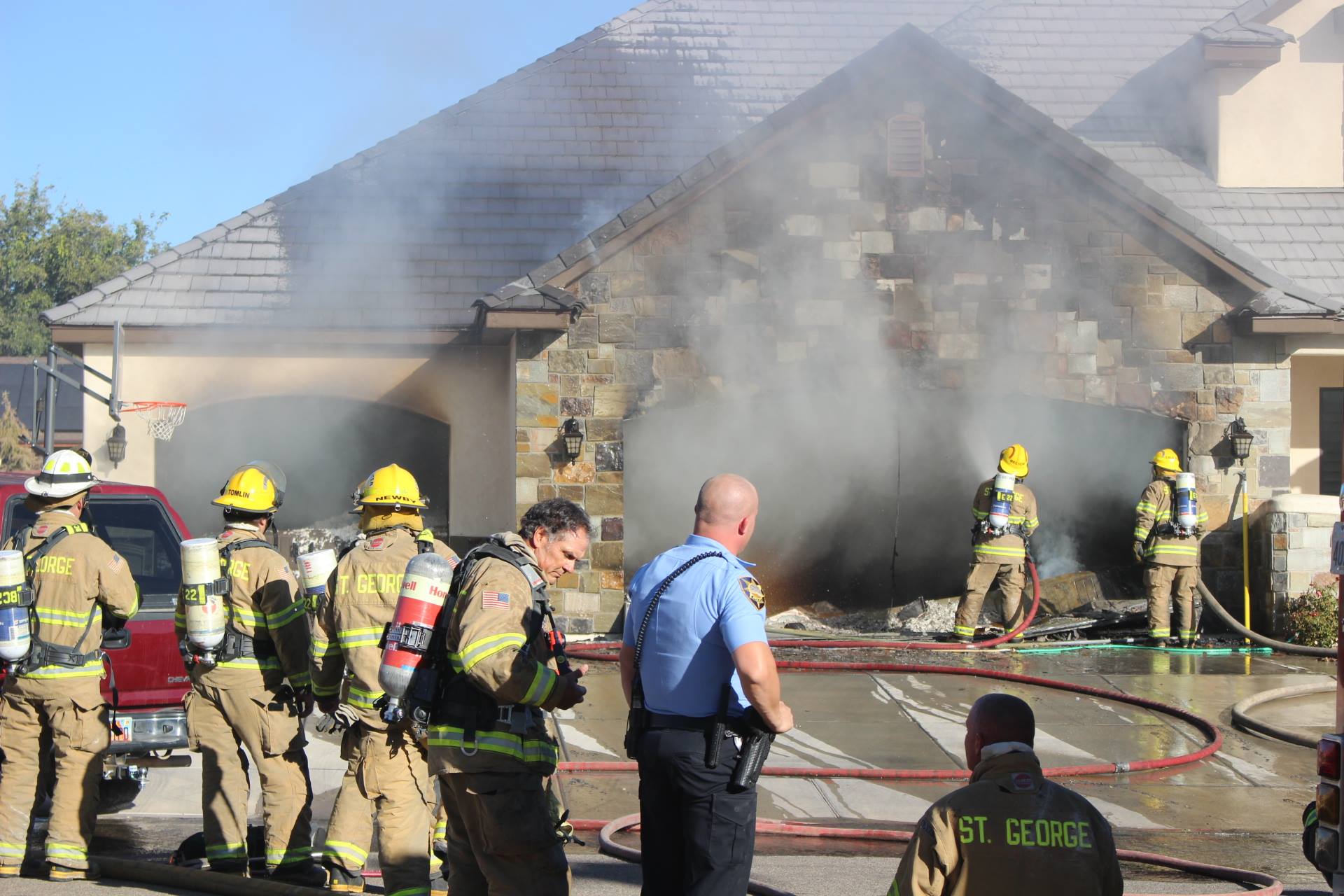ST. GEORGE — It’s a common scenario: A call for a house fire goes out, and the St. George Fire Department responds with a small army of firefighters and equipment. Up to four firetrucks and 20 firefighters arrive at the scene within minutes ready to battle a fiery blaze that turns out to be little more than the smell of smoke coming from a burnt-out motor in an air conditioning unit or food left on the stovetop for a little too long.

When the fire call turns out not to be as big a deal as originally reported, is it a waste of manpower and resources to pile on such a response?
If you’re the one who thinks your house is on fire, it’s not likely you’re going to be the one questioning the size of the response. Yet, there are some who ask the question: Why do so many firefighters respond to fire calls, especially when they turn out to be something small and simple?
It’s a question that pops up in the comments on St. George News from time to time when we cover fire-related incidents. Sometimes someone follows up with a remark about the city not being as frugal with taxpayer money as it should be.
St. George Fire Chief Robert Stoker told St. George News he sometimes gets those questions, too. He said the size of a response largely boils down to a matter of safety for all involved.
“We want to make sure we have enough equipment to fight the fire,” Stoker said, referring to the national fire response staffing recommendations set by the National Fire Protection Association — standards the Fire Department follows as closely as possible.
The NFPA, as it is more commonly known, provides staffing guidelines for full-time and volunteer fire departments in regard to the types of fires they may respond to. As St. George has a mixed department of full-time and volunteer staff, Stoker said they adapt and apply the standards to best of their ability.

For example, the NFPA recommends that a minimum of 14-15 firefighters be sent to a fire call for a single-family dwelling, which it lists as a 2,000-square foot, possibly two-story home without a basement.
Larger and more densely populated structures and areas, such as apartment complexes, shopping centers and high-rise buildings will warrant larger responses under NFPA staffing regulations.
“Generally, once a structure fire response is called out, our alarm assignment will be three firetrucks and a ladder truck,” Stoker said. “Out goal is to get enough equipment and manpower on scene to operate safely.”
As each truck carries between three and four firefighters, with possible reserves showing up in their own vehicles along the way, amassing a force of 16-20 firefighters isn’t hard to do.
“From full-time to on-call staff, the call goes out to everyone, and they come running,” Stoker said.
And what happens if they aren’t needed? The fire captain or battalion chief in charge of the scene simply cancels the remainder of the responding units and dismisses any that may already be at the scene who are not needed.
“It’s a lot easier to cancel units in route than to try to dispatch more units,” Stoker said.

Additional resources that arrive at a scene may also be kept there until it’s determined the situation is under control, Stoker said.
Since firefighters don’t know exactly what they may be getting into on certain fire calls, it’s far easier to have the additional manpower and resources on hand to deal with any fiery surprises over sending in a single fire truck with a four-man team that loses precious time when additional resources are needed.
“There’s always that potential the call could be a fully-involved house fire,” Washington City Fire Capt. Julio Reyes said, adding that if fire departments didn’t mount a seemingly large response at first, “we would show up and have to wait on other people.”
As a smaller agency when compared to the St. George Fire Department, the Washington City Fire Department uses somewhat differing staffing guidelines, yet largely follows the same practice of getting as many hands on deck as necessary, Julio said.
For major incidents that require more personnel than a single fire department can provide, they call on neighboring municipalities and fire districts for mutual aid.
Generally, there is what is known as a two-man in and two-man out rule, Reyes said. Two firefighters deal with the fire inside the structure directly while the other two tend to support roles on the outside.

On fire calls that turn into major incidents, Stoker said it can take a lot of personnel to combat the blaze effectively.
Providing a general breakdown of how firemen are divided at a scene, Stoker described four types of crews that firefighters form: a main attack crew, a backup crew, a rapid intervention crew (who rush into the fire if a firefighter is injured) and a rehabilitation crew.
The attack crews deal with the blaze directly and will be rotated out and replaced with a fresh group. Members of the rotating attack crews are then given an opportunity to rest and have their physical condition checked by ambulance medics who are otherwise on standby. Once deemed fit to return to the fire, they area rotated back into service.
For every firefighter inside a structure, there are at least three others providing support.
“In order to run a large structure fire safely, we need a lot of support staff on scene,” Stoker said.
Ultimately, the mass-response of firefighters people sometimes comment on is a matter of regulation and safety.
“Anyone who complains about the large response just may not understand,” Reyes said, noting that it is a valid concern for residents who want to know their tax dollars are being used wisely.
Email: [email protected]
Twitter: @MoriKessler
Copyright St. George News, SaintGeorgeUtah.com LLC, 2018, all rights reserved.
Fire fighters are on the clock whether they respond or stay at the station. So the biggest additional expense from a big response is the gas to get the trucks there and back and some equipment wear and tear. The payroll is largely (entirely?) unaffected.
I’m fine with the large response.
Exactly
Amen, great article!! The fire troops are doing it right!
Two thoughts:
1. Small fires that aren’t addressed adequately turn into big fires.
2. Especially where most firefighters are of the volunteer variety, responding to actual calls is probably the best continuing training they could receive.
Thanks Mori! Excellent points.
Also I am grateful that we have a great community with great help from Firefighters, Search and rescue, and LEO.
The more the merrier